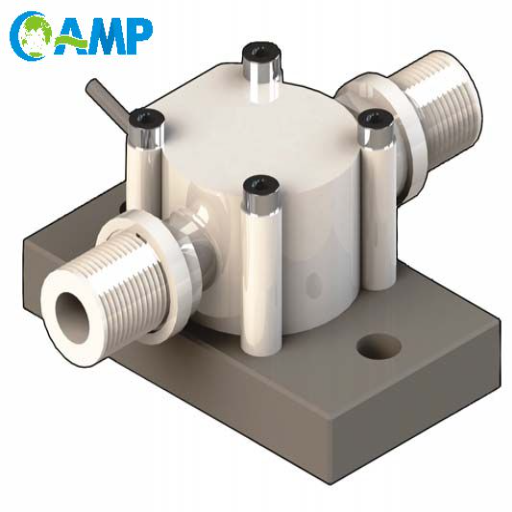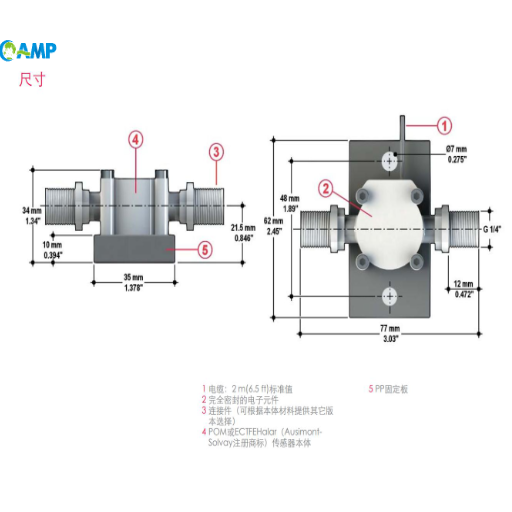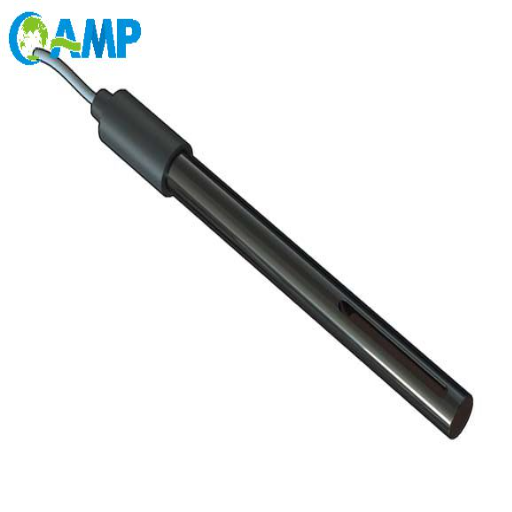-
 Chen Si
Hi there! Welcome to my shop. Let me know if you have any questions.
Chen Si
Hi there! Welcome to my shop. Let me know if you have any questions.
Your message has exceeded the limit.

What Is a SAP Flow Sensor? A Comprehensive Guide to Its Functionality and Benefits
2025-10-20 14:52:55
Sap flow sensors are advanced devices that enhance our understanding of plant conditions and water consumption, making them valuable assets in environmental research, agriculture, and forestry industries. These measurement tools observe the flow of sap in a plant and hence give an insight into the water transportation, the stress responses, and also the general physiological activities. By using this system, the researchers and the farmers will have very accurate data for their decision-making on irrigation management, conservation practices, or even crop optimization. Among the topics of this article are details about the working of the sap flow sensors, key benefits, and reasons why they are disruptive to traditional plant science and similar fields. This guide will walk you through the understanding of these ground-breaking devices and their uses, whether you are conducting research, farming, or just being a fan of the high-tech tools used in the environment.
Understanding SAP Flow Sensors

Definition and Purpose of SAP Flow Sensors
These sap flow sensors are specialized instruments for measuring the flow of sap into a plant's vascular system. The flow is monitored to determine water usage of the plant and to some extent its health and physiological processes. The sensors, by means of advanced technology, have therefore truly provided accurate, real-time information so that researchers and agriculturalists can make decisions on irrigation, conservation, and crop management. SAP flow sensors, hence, form an essential bridge towards understanding plant behavior under different environmental conditions, leading to better use of resources and support for sustainable agricultural practices.
How SAP Flow Sensors Measure Transpiration Flow
The movement of sap within plants is transpiration flow. Sap flow sensors primarily detect water movement within a plant's vascular system or the xylem. They may use the thermal method, which includes heat balance, heat pulse, or thermal dissipation, to detect indirect changes in sap velocity. A laboratory-induced heating of one section and measurement of its diffusion down or along the sap stream gives scientists alternative information on the transport rate of water. While data derived from such measurement points to the water use efficiency of a plant and its reaction to environmental parameters such as temperature, humidity, and soil moisture parameters, such fine modulation of system design aids in irrigation scheduling and water management optimization within agricultural systems.
Key Components of SAP Flow Sensors
The main functional parts within the SAP flow sensors are vital components:
The thermal probes are the means by which heat is introduced into the plant's stem. By detecting temperature differences caused by sap motion, they form a direct measure of water flow.
Data logging devices record temperature variations over time, allowing patterns in sap flow rates and environmental changes to be analyzed.
Power Supply: Many sensor equipments run on battery or solar energy. This ensures the sensor works all the time in an outdoor or remote environment of farming.
Protective Housing: Also known as enclosures, they protect the sensor from the environment, including rain, extreme temperature, and physical damage, enabling it to carry out the measured tasks with high accuracy for a long time.
Connectivity Modules: Most modern-day systems come with wireless or wired connectivity modules through which data can be transmitted to a computer or a mobile device in real-time for its analysis.
By combining these elements, the SAP flow sensor provides vital data to researchers and agricultural professionals for improving water use efficiency and adoption of sustainable practices.
The Mechanism of SAP Flow Measurement

The Ascent of Sap Within Xylem Tissue
Being forced and pulled by various physical forces, this upward movement of sap occurs through the xylem tissue. Root pressure, capillary action, and transpiration pull are the main mechanisms driving the upward movement of sap. Root pressure occurs when solutes accumulate in the root cells, thereby drawing water from the soil through osmosis. But the whole system can also work as a push to move water up, although this mechanism is mainly functional in smaller plants or when transpiration rates are low. Through capillary forces and in the process of cohesion and adhesion of water molecules, sap ascends through the narrow xylem vessels.
The transpiration pull creates the maximum force. Water being transpired leaves the stomata of leaves, thus creating negative pressure within the leaf's atmosphere, which pulls more water upward through the xylem. This water column persists due to the cohesive force between the water molecules and the less adhesive force between the water molecules and the xylem walls. The water will provide nutrients to the plant on which growth and physiological function depend. New advances in measurement technologies bring forth detailed insights into these processes and help researchers to have an elaborate overview of plant-water relations.
Heat Ratio Method: How It Works
The Heat Ratio Method (HRM) is among the most famous ones to measure sap flow in plants, offering a deep insight into water use and transport dynamics. This involves injecting a pulse of heat for a short duration into the stem and observing the heat's transport as affected by sap flow. Sensors downstream and upstream of the heat source sense the temperature and measure the velocity and flow rate of the sap. HRM is sought chiefly for its accuracy and flexibility, as it can be applied to different species of plants and various environmental conditions. Besides further improvement in sensors and analyzers, HRM continues to keep open pathways to understand plant physiology further, thus facilitating studies in agriculture, forestry, and environmental science.
Factors Affecting Sap Flow Measurement
Several factors may affect the accuracy and reliability of measuring sap flow using methods like the heat ratio method. Environmental conditions can be one such factor, including aspects such as fluctuation in temperature, humidity, and light intensity, which can directly affect the transpiration rate of the plant. Some physiological features of the plant will heavily influence sap flow dynamics, such as tree diameter, wood density, or sapwood depth. The choice of sensors to use and their placement can matter equally, potentially creating inaccuracies if, for instance, the sensor is not mounted correctly. An additional factor that might influence sap flow rates is water retention in the soil in the root zone-this would change globally, especially in dry or seasonally dry conditions. Calibration advances and improved sensor technology are fast overcoming these limitations, allowing researchers to obtain exact measurements under all circumstances. These factors need to be appraised if we intend to effectively use sap flow measurements to gain insights into plant behavior and ecosystem health.
Applications of SAP Flow Sensors in Plant Research

Monitoring Plant Water Status
Sap flow sensors are essential instruments to monitor plant water status, providing the researcher with an opportunity to understand how plants utilize and regulate water. By detecting water movement in plants through their vascular system, such an instrument provides insights into water loss through transpiration, relative stomatal activity, and general water uptake. Such information is essential to understand water stress in plants, a response that can be brought about by drought, salinization, or other environmental factors. Tracking such data helps scientists in determining the resilience of several species under differing conditions and applying that knowledge in making species more efficient in water usage, especially for agricultural purposes."
Recent improvements in sap flow technology have increased precision and reliability in measurement, even under adverse situations. For example, the design of a new sensor minimizes the effects of environmental fluctuations to obtain accurate readings. This ultimately advanced water-status monitoring in diverse climates and ecosystems. The data generated through the sap flow sensors go into building predictive models that optimize irrigation scheduling to prevent water wastage and sustain crop productivity under water-limited conditions. These applications portray sap flow sensing as a potentially revolutionary innovation for sustainable resource management in plant research and agriculture.
Water Transport and Storage in Plants
Recent advances in the study of water transport and storage inside plants have revealed fundamental processes that govern a plant's healthy state and productivity. Using innovative sensing technologies, such as sap flow sensors, coupled with state-of-the-art modeling approaches, researchers can delve further into understanding how plants regulate water use under changing environmental conditions. These investigations provide essential information about flow dynamics within xylem, root uptake efficiencies, and internal water storage mechanisms—all of which are relevant to understanding phenotypic resilience under drought and could be used in studying plant responses to climate change conditions. Considering all this high-resolution data and analytic means, scientists pursue perfecting the methods of water-use strategy concerning natural and agricultural systems to ensure their well-being into the future.
Effects on Plant Water Balance and Health
The amount of water a plant maintains is an essential factor in its health and functioning. Any disruption in the balance, either through an extended period of drought or through surplus moisture, will be significant in consequence for specific plant physiological processes. To set upon examples, drought restricts water absorption by roots in some way, lowering turgor pressure that interferes with cell enlargement as well as growth. On the contrary, the opposite is imposed by prolonged waterlogging that gives rise to hypoxic levels inside the soil, thus restricting root respiration and nutrient requirements. Occurrences at either end are adverse to photosynthesis and transpiration; in short, they lessen productivity.
Prior advanced research has elucidated the role of xylem in plant water balance, demonstrating how crucial efficient flow dynamics are for transporting water and dissolved nutrients throughout the plant system. Additionally, plants have developed intricate mechanisms to cope with environmental stresses, including closing stomata to reduce water loss during drought or activating aquaporins to facilitate water movement at the cellular level. These mechanisms would enhance resilience against environmental shifts but also highlight the importance of improving water availability for sustainable agriculture and ecology.
Emerging technologies in plant physiology, such as remote sensing and high-resolution imaging, are offering new interpretations into plant response to changes in water availability. These tools help observe indicators of water stress in plants and apply precision agriculture techniques to conserve water without compromising crop yields. Hence, keeping the water balance in plants must be understood and supported; this is tied to their health and survival and is connected in a global way of fighting food insecurity and lessening the impact of climate change.
Benefits of Using SAP Flow Sensors

Accurate Measurement of Transpiration Flow
SAP flow sensors are capable of supplying technical data with precision and in real time on water movement within the plant, thus contributing to agricultural and ecological research. By determining how fast water traverses a plant's vascular system, scientists can discern transpiration rates on plants under diverse environmental conditions. This allows them to evaluate how variables such as temperature, humidity, soil moisture, and nutrient availability affect plant response. The data, being trustworthy, allow for decisions to be made on scheduling irrigation, following up on the distribution of resources, and enhancing crop production whilst cultivating best practices for sustainable water use.
More Insight into Plant-Water Dynamics
In recent years, plant science has developed various tools that measure water transport in plants with varying degrees of precision. The presence of technologies such as sap flow sensors and infrared thermography is primarily to reveal plant water relations. Such tools give essential information on water movement in stems and leaves, which is vital for understanding plant stress conditions and water-use efficiency under varying environmental stimuli. Analysis of hydration patterns can lead to identifying drought tolerance traits and ways in which the availability of water can be optimized, so that the development of drought-resistant crop varieties and water-efficient agricultural practices can quickly proceed.
Enhancing Agricultural Practices
Improvement of technology and applied research has led to significant changes in agricultural practices, allowing farmers to optimize productivity while saving resources. One significant improvement is the method of integrating precision agriculture techniques. They use data-driven tools like soil sensors, GPS mapping, and remote sensing to give accurate information on soil health, moisture content, and crop conditions. Localized interventions like targeted irrigation, fertilization, and even pest control based on such exact data ensure that inputs are not over-utilized, thereby cutting costs and environmental pollution.
With sustainable farming practices for climate change and resource scarcity as the main challenges confronting practitioners, yet another innovation is found. One might say crop rotation, cover crops, and no-till farming techniques help by way of increasing carbon sequestration, reducing erosion, and augmenting soil fertility. At the same time, drought-resistant varieties of crops and irrigation techniques in arid to semi-arid lands conserve moisture. This synergy enhances the ability of agricultural landscapes to withstand extreme weather conditions and secure food for the long term.
By fusing traditional agricultural wisdom and cutting-edge innovations, we are entering an endless development loop within the entire agricultural sector. Predictive modeling and field trials thus allow the researchers and practitioners to foresee problems better and propose new solutions to the issues as they arise. By increasing yields, such advances are enabling generous access to resources and inclusive agricultural development so that even small farmers may avail themselves of technology. Status-wise, these procedures are giving agriculture a sustainable and more efficient investment worldwide.
Challenges and Limitations of SAP Flow Sensors

Common Issues in SAP Flow Measurement
In my past dealings with the method and based on my observations, an essential issue in measuring sap flow is the proper calibration of sensors. In other words, the SAP flow sensor must be calibrated correctly for precise measurements, as otherwise, varying external conditions, such as temperature changes or soil moisture content, may induce errors. These inaccuracies obviously lead to misinterpretations that may hamper decision-making in agricultural and forestry management. Furthermore, inconsistency in estimating sapwood area or improper installation of sensors further aggravates the issue; therefore, it is worth pursuing carefully while setting up.
Another point considered is related to the maintenance and durability of sensors. Over time, depending on environmental conditions such as moisture, harsh weather, or insects, sensors can be affected, leading to erratic performance. In addition, biofouling or accumulation of debris can stymie probe function, and therefore regular cleaning and maintenance are needed. On the other hand, due to uncertainties about the longevity of some models, they do not seem suitable for long-term monitoring. Consequently, a problem arises when applying such tracking in remote areas, where frequent replacement or maintenance is difficult to carry out.
Lastly, the cost and complexity of advanced SAP flow sensors may inhibit broad adoption, especially for smaller operations. The need for specialized training to use the sensor or interpret its data may also discourage its use. Recognizing these challenges and initiating advancements that improve the sensor's robustness, affordability, and ease of use will ensure maximum potential for SAP flow measurement in the support of sustainable agricultural and ecological practices.
Improving Sensor Accuracy
It is worth mentioning that, given the relationship between sensor accuracy and SAP flow measurement, the best way to improve sensor accuracy would be to follow a combined approach and improve technological aspects, materials, and methods. Features of tight sensor design with maximum precision and sensitivity could be implemented, such as the latest in thermal dissipation or heat pulse probes, which would have the ability to provide high resolution and more accurate readings. The developments in microelectronic technology are significant, as they allow the incorporation of components that are smaller and more efficient, further reducing noise while improving signal resolution under changing environmental conditions. From a materials standpoint, the use of those conferring minimum external interference, for example, through protective coatings or some insulated mechanisms, would guarantee proper working even when conditions in the field are harsh.
The second aspect connected to calibration is ensuring that robust calibration protocols are in place. Because calibration processes are built in relation to the plant species, environmental factors, and regional variations of types, the sensor readings would become more reliable and accurate. The use of machine learning and AI in calibration and interpretation could open another interesting opportunity. These systems could analyze the patterns, predict anomalies, and adjust the sensors' behavior for optimal performance in real time. I also think it is essential to establish industry-wide standards for measurement procedures and guidelines to minimize variability and enhance data collection consistency.
Furthermore, improving sensor accuracy often involves a collaboration between hardware and software developments, interspersed with training of the end users. User-friendly digital interfaces emphasizing data interpretation, coupled with operator training programs, should minimize errors and promote the end users' acceptance of the technology. By concentrating on these areas, we ensure that SAP flow measurement will be far more reliable, a prerequisite for greener decision-making in agriculture and ecological alternatives.
Future Developments in SAP Flow Technology
Also in the future, significant advances will be made in SAP flow technology for improved accuracy, affordability, and accessibility. One such advancement involves the introduction of state-of-the-art sensor technology, such as MEMS, which allow for much smaller and more efficient sap flow measurement instruments with great precision. These instruments will provide a higher sensitivity with lower power consumption, hence proving useful in remote and large-scale agricultural applications. Wireless connectivity and IoT devices are also growing in experimental fields, as they can facilitate real-time data transmission and analysis, offering considerable possibilities for transforming how plant health and water usage are tracked.
Besides, the data analysis side will take on a heavy task of AI and machine-learning-algorithm-based analytics. These technologies can find patterns and anomalies in sap flow data that may provide deeper insights into plant physiology and their environmental interactions. Another primary application may lie in a possible assistive role of AI in irrigation, nutrient management, and crop health decisions. Another anomaly is the upward trend for adopting cloud-based platforms for sharing data and remote access, further allowing collaborations across regions to produce a better-informed global agricultural ecosystem.
Finally, I envision that the subsequent future development of SAP flow technologies will need to compromise on sustainability and affordability. Affordable materials and scalable manufacturing techniques will enable these systems to be used by smaller farmers and in resource-poor regions. SAP flow measurement has the promise, when joined with cutting-edge innovation and a conscientious effort toward ease of use and debtor environmental factors, to engender a more sustainable and efficient agricultural world."
Tags: What is a SAP flow sensor?


